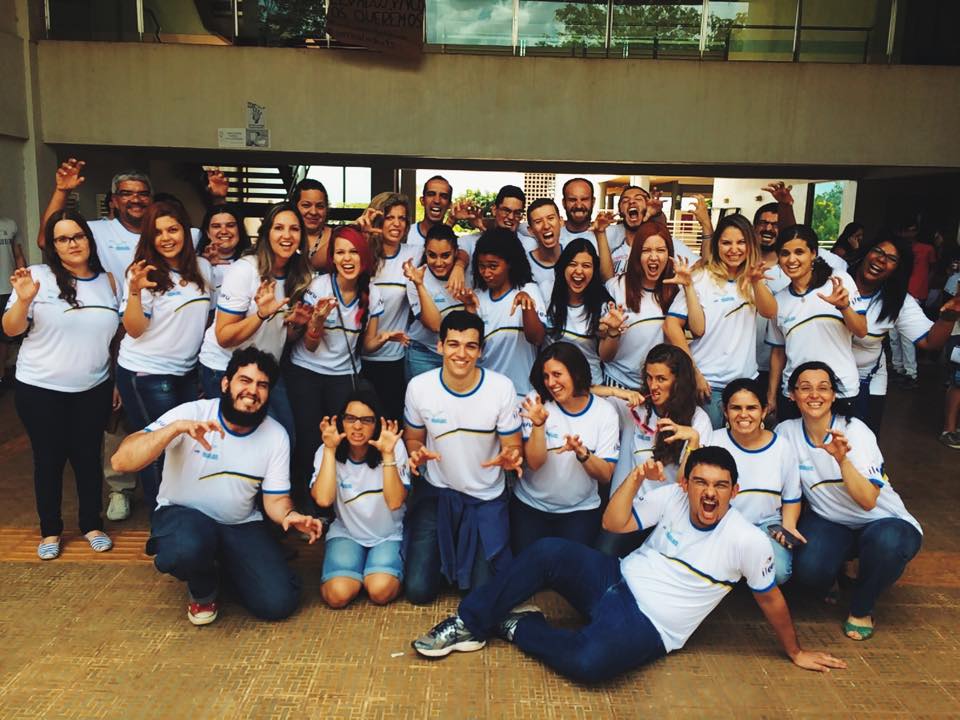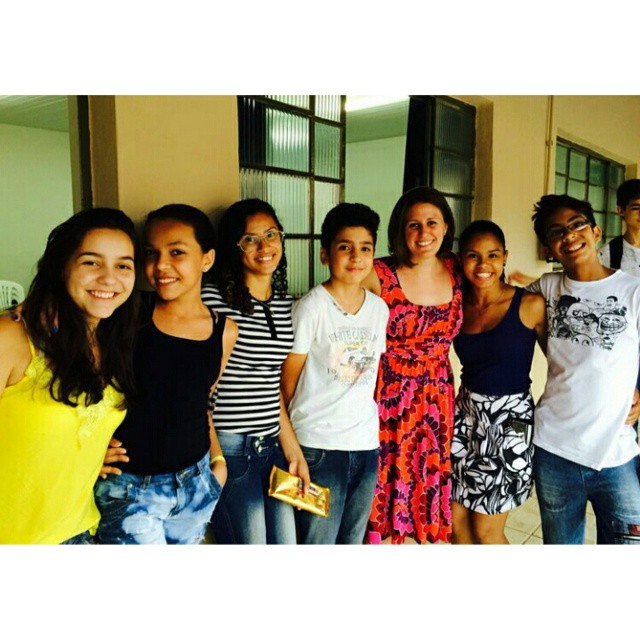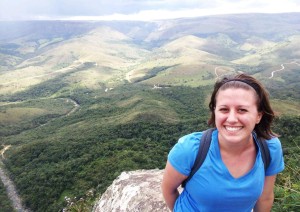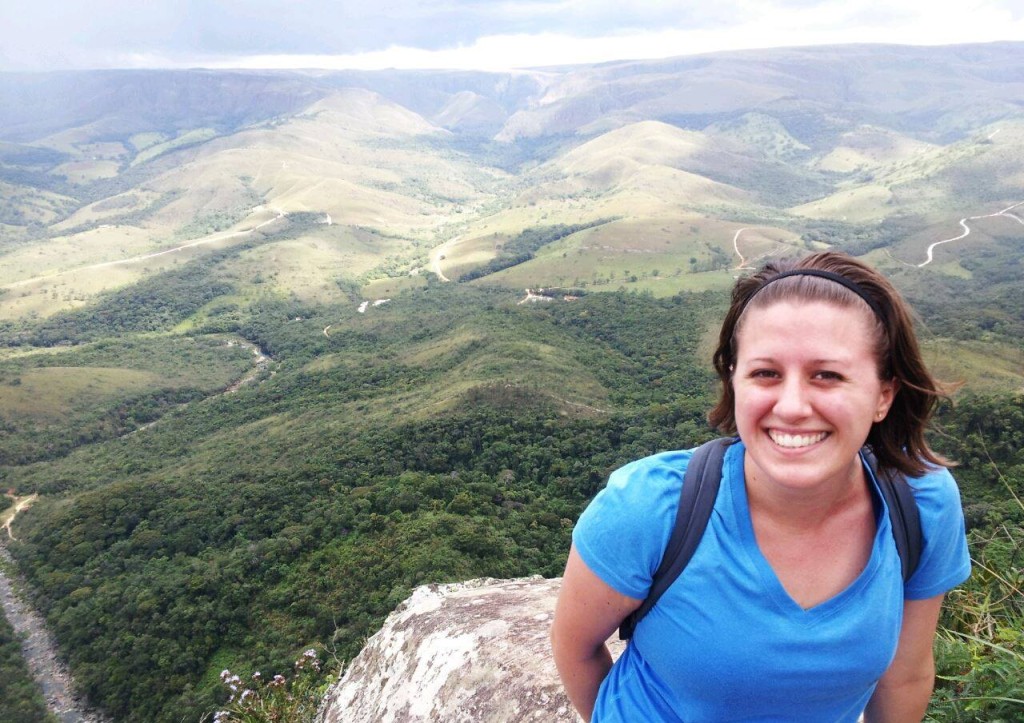My Portuguese textbooks arrived in the mail shortly before my first class in June 2013. I ripped open the amazon.com packaging and held new treasure in my hands. I skimmed the chapters and understood several words thanks to my Spanish skills. Yet, I had no idea how to pronounce Portuguese. There were new letters, new accents, and new diphthongs.
It wasn’t easy diving into another language. Sure, it was much less difficult than learning a new language from scratch. For example, I didn’t have to learn how to conjugate verbs again. Yet I felt initial resistance. Part of it was laziness. My February 2014 departure for Brazil seemed so far away. However, another part was rooted much deeper. I had an identity crisis.
Imagine this: I formally studied Spanish for over a decade and chose to because I fell in love with the language. It sincerely makes my heart sing and fills my soul with joy. The Spanish language was, and still is, a significant part of my identity. When I began learning Portuguese, I felt like I did something wrong. It felt like I turned my back on my entire Spanish language and culture learning experience. I felt odd not reading, writing, speaking, or listening to Spanish in a language class.

I found Portuguese pronunciation challenging mostly because Portuguese is a very nasal language. This isn’t bad, just different. While English also has nasals, I had never felt so much air pass through my nose as I did speaking Portuguese. I used airways I didn’t know existed. My first Portuguese teacher Claudia, a Brazilian from São Paulo, had us squeeze our noses with two fingers while pronouncing non-nasal and nasal sounds to feel the vibrations. This was helpful and could potentially save embarrassment.
For instance, a favorite Brazilian food of mine is pão de queijo, or cheese bread from Heaven. Seriously, the Brazilians take cheese bread to an untouchable level. Pão (bread) is a nasal sound. I had trouble pronouncing this word. Once during a lesson, my teacher Marcelo (another Paulista) smirked when I said, or tried to say pão de queijo.
“Did I say it wrong?”
“Yes, be careful. When you don’t nasalize the word, it means something else,” he explained and continued teaching. I had the feeling Marcelo didn’t want to share what I unintentionally said.
“What does it mean?” I just had to know.
Hesitantly he stated, “It’s a slang word for the male genitalia.”
“I’ve been saying WHAT this entire time? Why didn’t you tell me before?”
“We Brazilians are used to it from foreigners,” Marcelo giggled. Needless to say, I quickly mastered the right pronunciation. I didn’t want to enter a bakery and ask for an unlisted menu item.
Another Portuguese word commonly mispronounced by gringos is coco for coconut. The word stress is placed on the first syllable. However, if one stresses the second syllable like in Spanish and says cocô, they are in for a surprise. Cocô is not a very nice word for poop. So if ordering água de coco (coconut water), always stress the first syllable to avoid ordering poop water and receiving various reactions. Thankfully, I made this mistake only once among friends.

I also had challenges separating Spanish and Portuguese while speaking. Each time I tried speaking Portuguese, Spanish came out (now I have the reverse issue). The first time this happened, I paused in confusion. It felt like my brain automatically overrode free will and rerouted the languages. I was so programmed to Spanish. It reminded me of muscle memory, except in this case with my mind.
Later, I learned the brain stores all foreign language in the same area. It’s all blended together like alphabet soup. I felt better about mixing up my languages. This doesn’t occur as often now. Sometimes a Spanish word slips out and even random Catalan or Italian words and phrases. Occasionally, I can’t think of the English word but can in another language. This freaks me out. Yet, I like it because I’m a nerd.
My Portuguese language experience is also different from my Spanish language experience because I learned more through speaking than reading and writing. This is difficult for me because I’m a visual learner. I need to read and write the language to absorb and retain it faster. I felt very frustrated and stressed sometimes. The experience improved once I committed myself to consistent self-study in addition to daily conversation with my Brazilian host family and co-workers.
When I don’t know a Portuguese word, I portuguesify a Spanish word. Sometimes it works, sometimes it doesn’t. There are also many English words used in Portuguese. At times, these English words are pronounced similarly or with a stronger Portuguese pronunciation. I never know when to do this, so it makes for more laughs. My host family still teases me for the way I said bacon and sundae. I stopped applying Spanish pronunciation rules after that and stuck to English pronunciation when in doubt.
It took time to fully embrace learning Portuguese, especially because I didn’t know what future Portuguese had in my life. A conversation with Karen, a previous Fulbright English Teaching Assistant in Uberlândia, changed this perspective. She too had a strong Spanish language background and faced similar challenges with Portuguese. Karen encouraged me to master Portuguese as my third language and pair it with Spanish for my career.
Passion drove my Spanish studies before. Now career aspirations drive my Portuguese studies. I still have a lot to learn. Now that I’ve stopped resisting Portuguese, I find it enjoyable and welcome the enrichment.

 About the Author: Amanda White credits her high school Spanish teachers for inspiring her path of language studies and world travel. She first studied abroad in Barcelona, Spain as a Spanish Major and later returned to teach US Culture and English as a Second Language. Each year in Spain Amanda took the opportunity to travel across Europe and Northern Africa. Her adventures then took her south to Brazil through a Fulbright Scholarship where she worked with Brazilian professors and students aspiring to study overseas. She also learned Portuguese as she dove into Brazilian culture. Amanda strives to work with students in completing and supporting their international education and study abroad goals. (In this photo Amanda was climbing to the top of Casca D’Anta waterfall in Serra da Canastra National Park!)
About the Author: Amanda White credits her high school Spanish teachers for inspiring her path of language studies and world travel. She first studied abroad in Barcelona, Spain as a Spanish Major and later returned to teach US Culture and English as a Second Language. Each year in Spain Amanda took the opportunity to travel across Europe and Northern Africa. Her adventures then took her south to Brazil through a Fulbright Scholarship where she worked with Brazilian professors and students aspiring to study overseas. She also learned Portuguese as she dove into Brazilian culture. Amanda strives to work with students in completing and supporting their international education and study abroad goals. (In this photo Amanda was climbing to the top of Casca D’Anta waterfall in Serra da Canastra National Park!)


